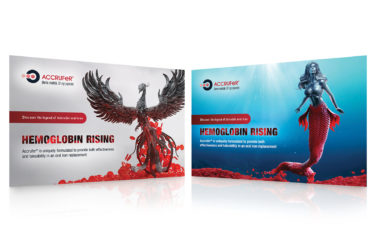Prior to the pandemic, pharma was routinely rated as one of the least trusted industries with one of the lowest reputations. The Harris Poll, which rates the consumer perception of industries on a seven-point scale, found that prior to 2020 the baseline of positive opinion toward pharma hovered around 32%, as Rob Jekielek, Managing Director of Harris Poll, told FiercePharma. So, did the work of pharma companies developing new vaccines and treatments to fight COVID-19 help shine a more positive light on the industry?
The answer is yes…and no. During the pandemic, pharma’s reputation, according to the Harris Poll, rose significantly, reaching a positive perception peak of 62% in February 2021. Since then, however, the industry’s reputation is “softening” a bit, as Jekielek put it in that same article. In September 2021, pharma’s positive rep dropped to 56%, which is still nowhere near its prior lows, but the question is whether pharma can keep the reputation gains it made during this time once we move further past the pandemic.
One area where the industry made little gains is public trust. The annual Public Affairs Council/Morning Consult poll, conducted in September 2021, found that pharma is still the least trusted out of the nine industries it examines (also including health insurance, energy, technology, banks/financial institutions, automobile, large retail, manufacturing, food and beverage). Only 13% of the 2,199 adults polled viewed the pharma industry as more trustworthy than those other industries, while 46% found it to be the least trustworthy. However, that is an improvement from 2020 when 49% rated pharma as the least trusted. And yet, how can the industry be viewed generally more favorably, while still having trouble earning trust?
“I was listening to a podcast on the predatory nature of pyramid schemes and the host compared them to ‘big pharma.’ This was recorded at a time when the health industry is fighting to save lives during a global pandemic,” says Kristie Kuhl, JD, Managing Partner, Global Health Practice Leader, Finn Partners. “A colleague once said that it’s not enough to do good; you have to be good. I think that’s the reality of the health industry. In addition to making a lifesaving medication or treating people with illness, as an industry we must ‘be good’ and be transparent so that people experience and believe in our goodness.”
Pharma’s Pandemic Communication Strategy
As life sciences communication experts dealt with the impact on the industry’s reputation—in addition to public mistrust, rampant miscommunication campaigns about the vaccine, and the public’s push to seek more healthcare information digitally—what did they learn about how to better communicate with individuals in order to earn their trust and show them what the pharma industry is really about?
“Life sciences companies responded to the pandemic with public relations and communications strategies ranging from silence and business as usual to valued relevance, and some even tone deaf,” explains Ivy Cohen, President, Ivy Cohen Corporate Communications. “Those who were silent due to fear or uncertainty missed the opportunity to benefit from the public’s rare period of increased trust of the industry. Those that did not head-on address the public call for brands with purpose and those limiting their proactive efforts to educate and communicate empathy may have missed the boat to demonstrate their essential reason for existing: people (patients, employees, the public).”
But, regardless of what those companies did during COVID, the healthcare industry is facing a looming issue which pharma communicators can help to address moving forward.
“As many patients postponed care for their chronic conditions, life sciences companies have the opportunity to immediately ramp up their external communications to offset what was likely buried during the avalanche of COVID-19 coverage: the need to educate the public and provide resources with HCPs to help patients understand the consequences of putting off testing, monitoring, procedures, and more,” Cohen adds.
Lessons Learned for Improved Communication
Jennifer Gallo, Executive Vice President, Client Engagement and Business Development, Evoke KYNE, believes the biggest lesson life sciences communicators learned over the course of the pandemic is the need to disseminate information as quickly and transparently as possible.
“With so much new information coming out each day, our understanding of the virus and how companies were reacting changed constantly,” Gallo says. “When people have questions, they want clear, current information—even if the answer is ‘we’re not really sure.’ In many instances, especially in the case of new data or issues management, companies are hesitant to say anything until they have ‘the fully story.’ But what we’ve seen is a more consistent cadence of updates can be beneficial in establishing competency, continue progress, and faith in the end result.”
For an industry that typically moves slowly and cautiously, providing more rapid and real-time responses can be scary for some companies. But Dave Thomas, Associate Director, Social Intelligence, CMI Media Group, offers one way to help companies pull it off.
“The core to remaining nimble is having a strong internal workstream with clearly set roles, responsibilities, and turnaround times,” Thomas offers. “This team should include contacts from marketing; corporate communication/PR; and legal, medical, and regulatory affairs. Having this team (and their backups) in place empowers your community management team to act quickly, providing the audience with the best experience and most up-to-date information possible all while meeting regulatory and compliance obligations.”
Healthcare communicators that did move to rapidly share information saw the benefit to both their companies and the public at large.
“Companies that pivoted quickly to leverage communication channels and embrace technology were often successful in supporting both national health initiatives to inform and educate patients about COVID-19, but also create awareness for their own products and services that could help meet patients’ and providers’ changing needs throughout the pandemic,” says Katherine Hahn, Owner, Mile Square Communications. “The pandemic humanized the work that life sciences is doing, and public relations helped make those unique stories the headlines.”
Hahn adds that the life sciences industry needs to continue to leverage what it learned about communications during this time even as patient and physician experiences are returning to more in-person contact.
“There has never been a more important time for life sciences to be authentic, informative, and personalized in its communications,” Hahn explains. “There is an opportunity for life sciences to show its human side through public relations programs. As patient and physician needs evolve, communication support allows companies and leadership teams to disseminate information quickly and effectively.”










